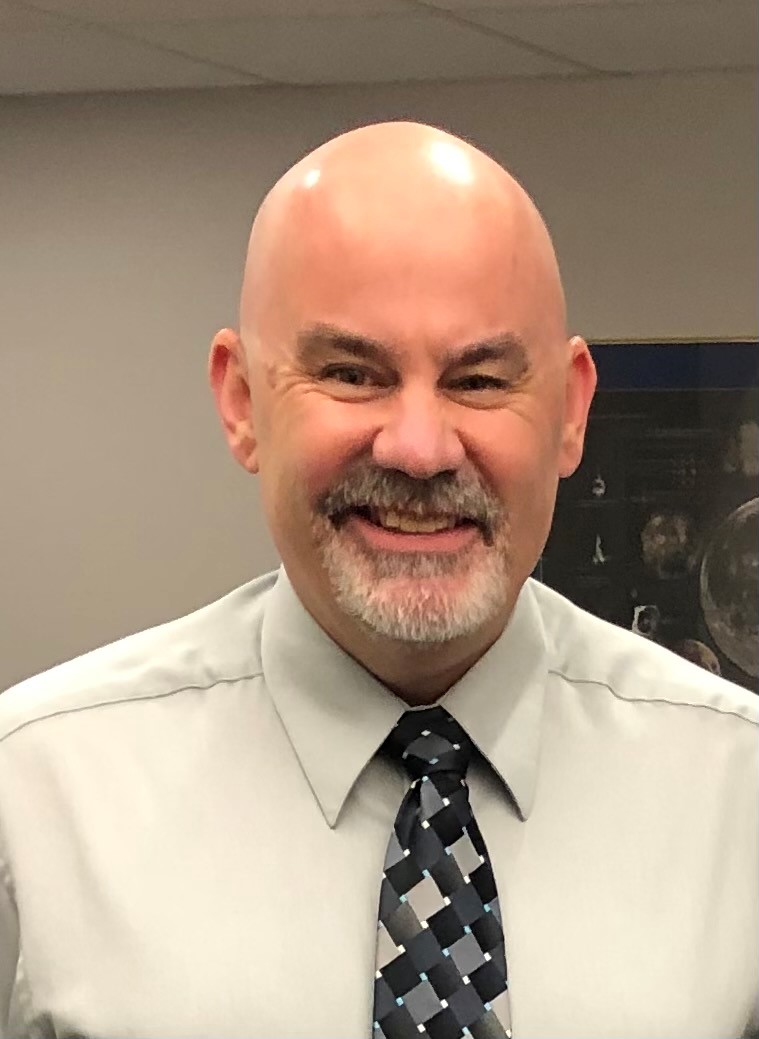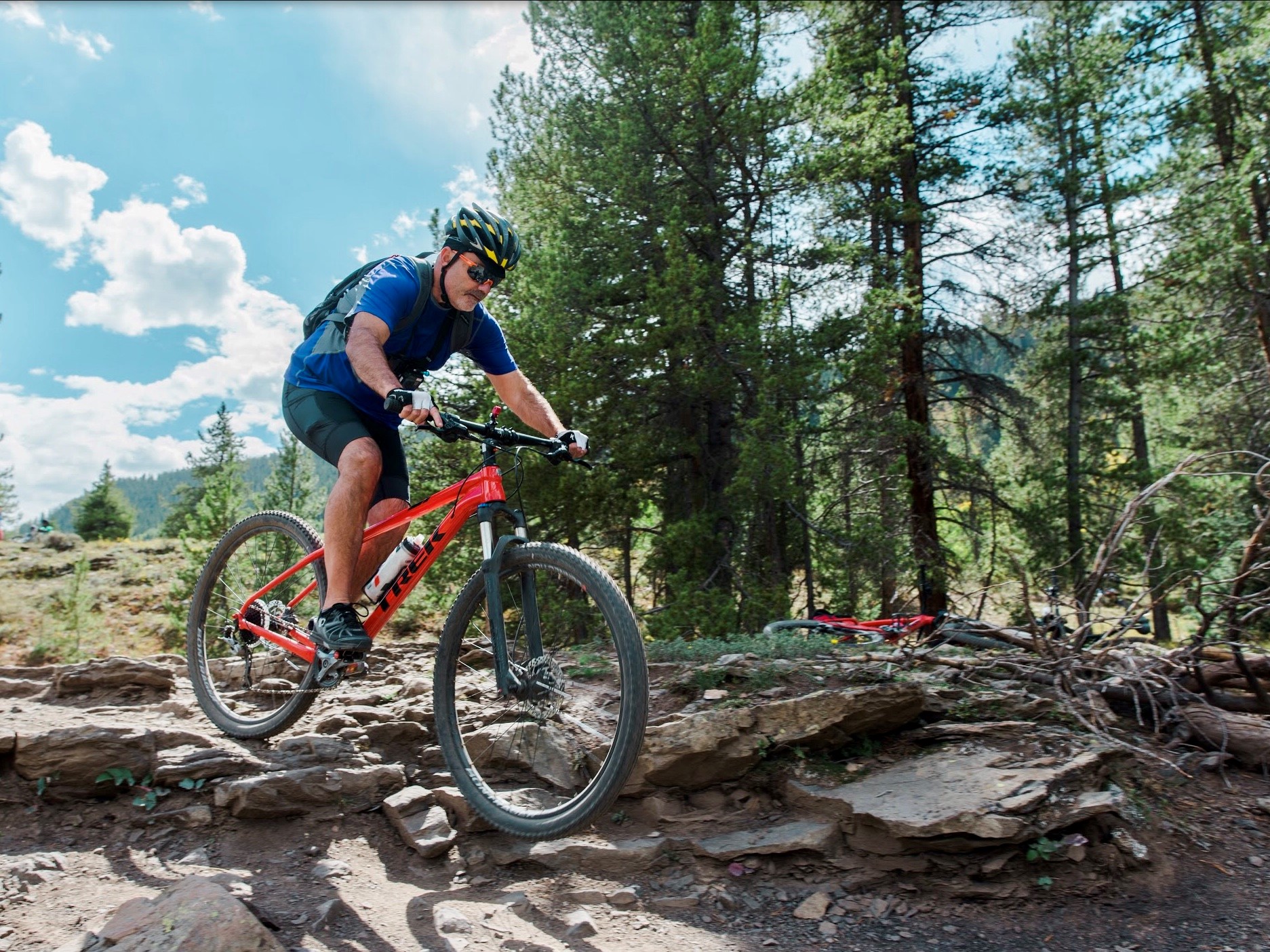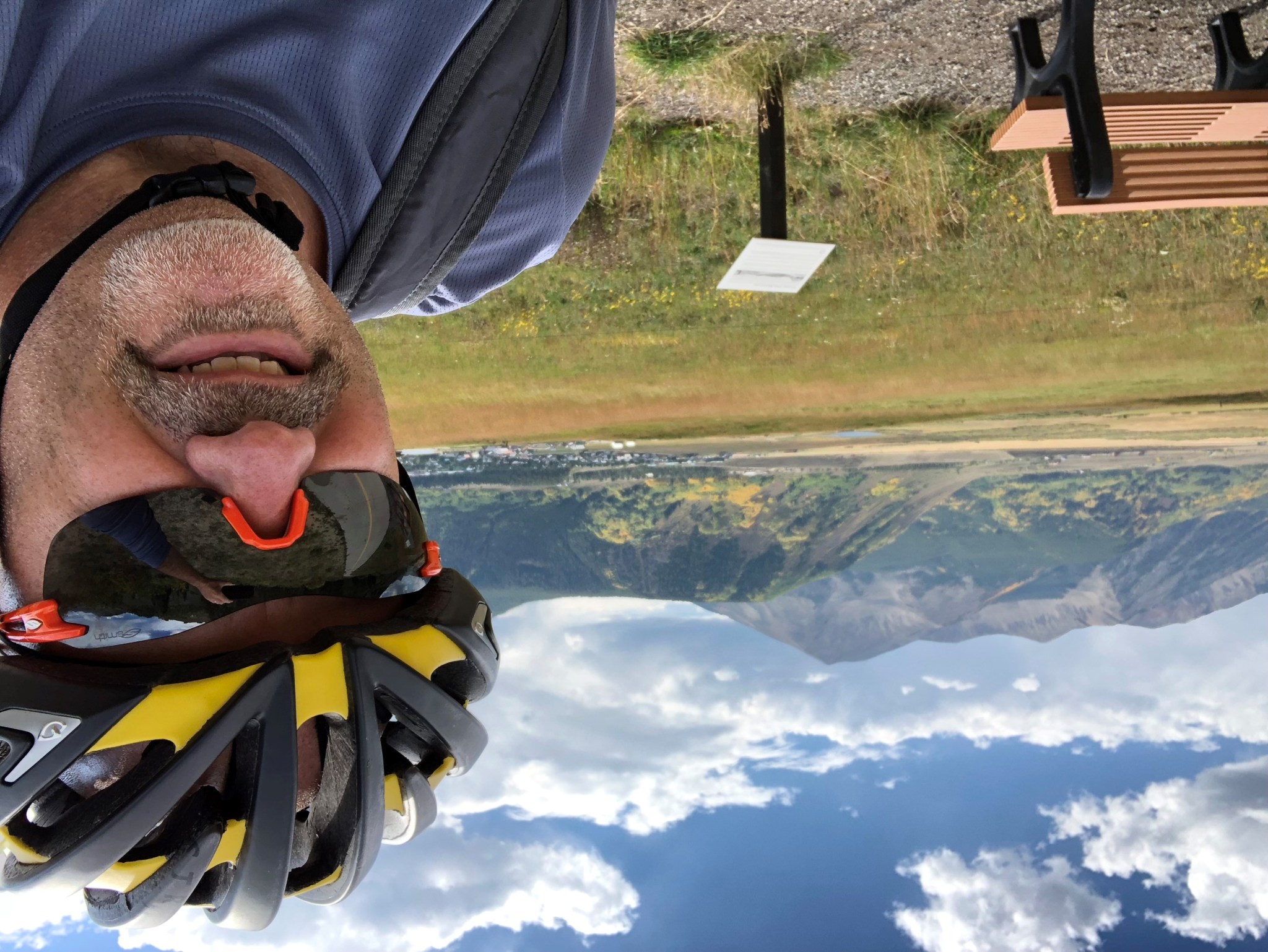
Name: Chris Whyte
Title: Source Evaluation Board Manager
Formal Job Classification: Procurement Analyst
Organization: Code 210, Procurement Operations Division, Management Operations Directorate
What do you do and what is most interesting about your role here at Goddard? How do you help support Goddard’s mission?
I support the teams of individuals working on source evaluation boards who solicit and evaluate competitive proposals on large procurements between $5 million and $1 billion. I also review all the documentation associated with the evaluation board process to make sure it follows regulations and policies.
What is your educational background?
I have a Bachelor of Science in management from the U.S. Air Force Academy and a master’s in computer resource management from Websters University.
Why did you enlist in the United States Air Force?
My father worked in satellite communications in the Air Force. I wanted to serve my country. I started at the Air Force Academy in June 1989 and graduated as a second lieutenant in the Air Force in June 1993.
What are some of the highlights of your service in the Air Force?
After graduation in 1993, I was a contracting officer in the Air Force. In 1998, I had a six-month tour in Bosnia supporting Army operations. When I was in Bosnia, things had settled down, but we were still conducting operations there. I served for just under six years.
How did you come to Goddard?
In 1999, I left the Air Force to begin working at Goddard as a contract specialist. I came to Goddard because my then-future wife lived in Baltimore County and she did not want to travel because she had a young daughter, now my stepdaughter.
What are some of the most interesting projects you have worked on at Goddard?
In 2018, NASA conducted a competition that resulted in nine contracts for companies to deliver payloads to the Moon. We had quite an interesting group including engineers and other experts from NASA Headquarters and several centers. The evaluation board team developed the requirements based on abilities of the United States commercial spacecraft launch and payload delivery market.
Our goal was to maximize the use of U.S.-based contractors to leverage their developing commercial spacecraft capabilities to provide similar services for NASA. The contractors already had (or were developing) commercial capabilities and launch plans and we wanted to leverage those plans by adding our payloads and developing lunar delivery capabilities. In 2018, we awarded the contract called Commercial Lunar Payload Services to several contractors. Launches and payload deliveries are anticipated to start in early 2022.

How do you keep everyone on a source evaluation board focused?
Generally, the board is sequestered. One of these reviews typically lasts six to 12 months but can go on as long as two to three years. The team is sequestered because individual proposal data is extremely sensitive and only the team members should be privy to the evaluation process.
I help keep the members focused by making sure that all individuals understand their responsibilities and remind everyone that we are all working toward the same team objective. The objective is to select the best contractor(s) at the best value, to provide required products or services to NASA.
What are your goals as a member of the Equal Accessibility Advisory Committee?
Around 2018, I joined the committee. I have a friend who is hard of hearing and she encouraged me to join the team to share my experience of having a spinal cord injury. As a committee member, I participate in their meetings and events. In 2018, I was a keynote speaker for October’s Disability Awareness Month. I spoke about the impact of disabilities, my recovery process, returning to work, and the positive lessons from my experience.
In 2015, I was participating in a triathlon near Lake Anna, Virginia. During the cycling portion, I was run off the road by a truck that did not stop. The driver may not have seen me or known that I was injured. I collided with a tree and fractured several ribs, several vertebrae and my shoulder blade. Another cyclist that was competing in the triathlon stopped, called 911, and talked to me until paramedics arrived. My parents also arrived a few minutes later. At the time, I was paralyzed from the chest down and part of my right arm was also paralyzed.
An ambulance took me to a small, local clinic and later that day I was air lifted to Johns Hopkins in Baltimore for emergency, six-hour surgery in the middle of the night. After I physically recovered from the injury, I spent three months in rehab learning to walk again. I was at Hopkins for the first month of recovery from surgery and my continuing physical therapy is with the Kennedy Krieger Institute in Baltimore.
I have paralysis that impacts my mobility and results in other medical challenges, but I am not paralyzed. I can walk and do steps carefully. My body functions. I have less strength and coordination, especially below the waist. I still have balance issues and some constant nerve pain issues. I have manageable pain, but I’m happy to still be fairly active and I now ride my bike again. I was told by doctors that my health and fitness at the time of my injury was an important factor in my ability to partially recover my mobility.
About five months after my injury, I did the 5K (3.1 miles) walking part of the next Baltimore marathon in under an hour. Many people with spinal injuries require wheelchairs or other mobility aids, but I have been very lucky in my recovery and I’m fortunate to walk again.
What is your involvement with the Kennedy Krieger Institute hand cycling and mountain biking programs?
I have maintenance physical therapy for eight weeks every year to a year and a half at Kennedy Krieger. Besides regaining mobility in my first few years of recovery, as I age, the goal is to keep the mobility I have.
I also participate in their hand cycling team program. Hand cycles are three wheeled bicycles that paralyzed individuals power with their arms instead of with their legs. I recovered enough to ride a regular bicycle, but I lead training rides for the team during the summer. I also escorted one of the hand cyclists during the Baltimore marathon. The annual Baltimore marathon includes hand cyclists with escort bicyclists. Each hand cyclist is accompanied by a bicyclist to aid if needed and to provide visibility, as hand cycles are low to the ground. I was once featured on a local Baltimore news station based on my recovery and participation in the Baltimore marathon events with Team Kennedy Krieger.
Another Kennedy Krieger program involves mountain biking with the Adaptive Sports Center in Crested Butte, Colorado. Kennedy Krieger sends some spinal cord injury patients there to show them that they can travel and go mountain biking on adaptive mountain bikes. I am fortunate enough that I can use a regular, two-wheeled mountain bike. The Adaptive Sports Center and Kennedy Krieger physical therapists assist with the trip and the cycling adventure.

What do you do as a certified peer mentor for the Christopher and Dana Reeve Foundation?
Occasionally I connect with new patients who are dealing with spinal cord injuries. I answer questions, share my experiences and offer advice and overall moral support.
When I first meet new patients, I listen to what they have to say. I hear about their experience and try to help if I can.
My overall advice to them is that while spinal injuries are a substantial challenge, the injuries and ability to manage challenges do improve some with time. I ask them to try to be patient and stay as positive as possible, under difficult circumstances. I let them know that while they will have challenges ahead, their ability to deal with those challenges will improve.
Everything varies depending on your perspective. Most bad situations improve over time. So try to be patient and optimistic for the future.
Is there something surprising about your hobbies outside of work that people do not generally know?
I own a 35-foot powerboat cruiser. I love to go boating with my family and friends, exploring new towns on the Chesapeake Bay. We enjoy boating to St. Michaels to enjoy the town and eat at their restaurants.
Who is your hero?
My wife, Patty. She is the most encouraging, optimistic and supportive person I know. After my injury, she worked hard to help keep me in a positive mind frame looking towards the future. She was hopeful and she gave me hope.
What is your “six-word memoir”? A six-word memoir describes something in just six words.
Family and friends; life is good!
Conversations With Goddard is a collection of question and answer profiles highlighting the breadth and depth of NASA’s Goddard Space Flight Center’s talented and diverse workforce. The Conversations have been published twice a month since May 2011 and are archived on the NASA Goddard homepage under the People tab.
By Elizabeth M. Jarrell
NASA’s Goddard Space Flight Center

























